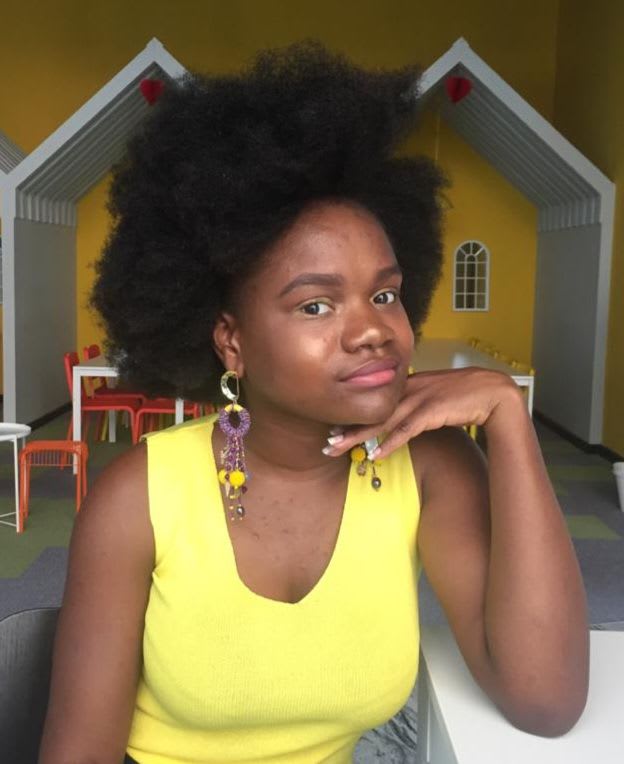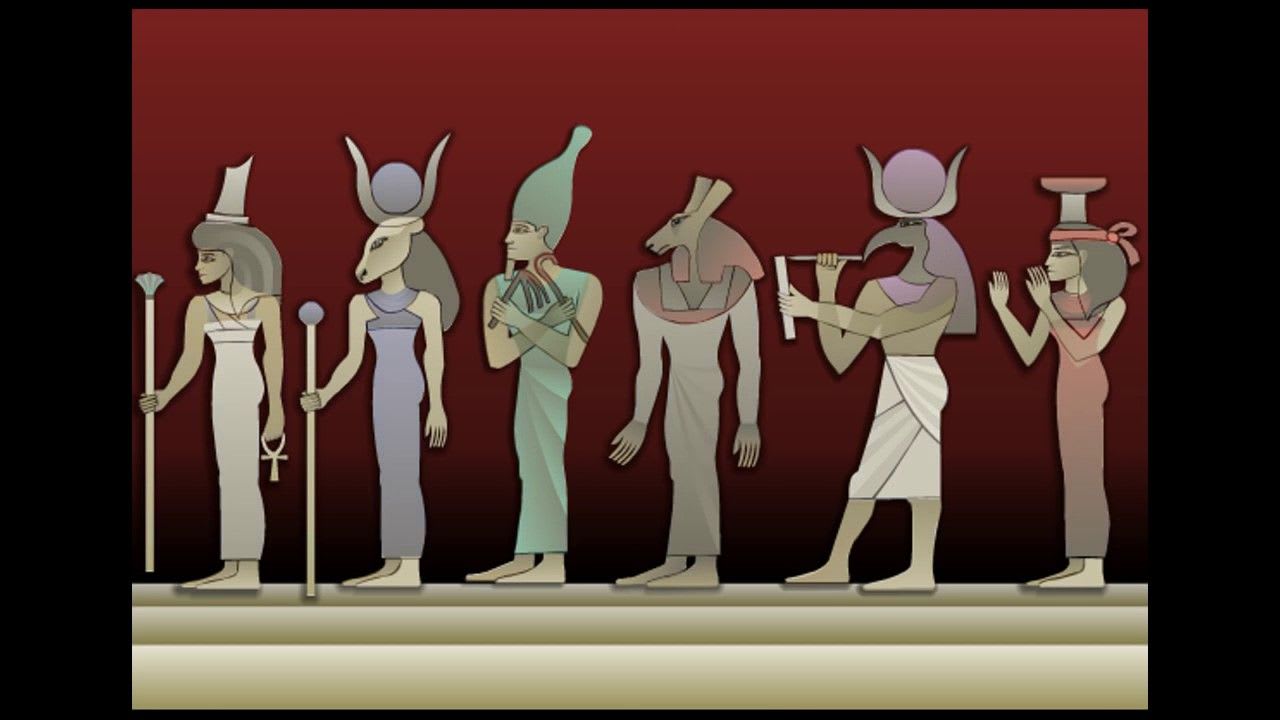Since time immemorial, humans have questioned how the world and everything in it came into existence. While scientists largely believe the universe is a result of a phenomenon called the Big Bang Theory, several ethnic groups all over the world have developed their own unique, creative theories to explain how the world came to be.
Here are some of the most intriguing creation myths from ethnic group across the continent of Africa:
· Yoruba (West Africa)
According to the Yoruba people, in the beginning, the world was merely made up of the sky above, and water and marshland below. The chief god Olorun (“owner of the sky”) ruled the sky, while the goddess Olokun (“owner of the ocean”) ruled what was below. One day, a god named Obatala went to ask Olorun for permission to create dry land where all sorts of creatures could inhabit. After he was granted permission, he sought counsel from Orunmila, Olorun’s oldest son and the god of prophecy, on how to go about the creation.
Orunmila advised that Obatala would need a gold chain long enough to reach the earth below, a snail shell full of sand, a white hen, a black cat, a palm nut and a special egg that encompassed the essence of both the male and female orishas (gods). All the gods put together the required items for Obatala to carry in a bag.
Obatala then began his descent downwards, however, upon getting to the end of the chain, he realised that its length was not enough to reach below. From above, Orunmila told him to pour the sand from the snail shell and release the white hen. As the hen landed on the sand, it began spreading the sand around so that wherever the sand landed, dry land was formed. Bigger piles became hills and smaller piles became valleys.
Obatala jumped to one of the hills and named it Ife. There, he dug into the sand and found clay to mould figures after his likeness. He soon got tired and decided to take a break, during which he made wine from a nearby palm tree and drank it. In an inebriated state, he formed many imperfect figures. Unaware of this, he called on Olorun to breathe life into his figures. The next day, he regretfully realised what he had done and swore to never drink again. He also vowed to take care of those who were deformed, earning him the title, “Protector of the Deformed”.
According to the Yoruba worldview, Ife is the origin of all mankind. This is why the Ile-Ife kingdom in South-West Nigeria holds deep religious and cultural value to the Yoruba both within the continent and in the diaspora—particularly for those who are traditionalists and follow the Yoruba religion. Just like the religion, the creation story speaks to the spirit of collaboration and community valued among the Yoruba.
· San (Southern Africa)
The San peoples, spread across Southern Africa, believe that a benevolent god called Kaang created all things. Initially, Kaang and the people and animals he had created lived together in harmony below the surface of the earth. Then, Kaang decided to build the world above.
He started by creating a large tree with branches that stretched over the whole earth. He made a hole at the base of the tree that allowed the people and then the animals below to climb up into the new world he had created. Once on the earth’s surface, Kaang gathered all the people and animals and commanded them to live together peacefully. To humans in particular, he warned that they should not start any fires, or else a great evil would befall them. They assured Kaang that they wouldn’t, and he left them to their new world.
However, when the sun went down, the humans quickly realised their need for fire as they couldn’t see each other and were getting cold. They saw no other option than to flout Kaang’s rule, making fires to provide warmth and illumination.
Unfortunately, the fire frightened the animals, causing them to flee to the caves and mountains. This broke the special bond between people and animals, even costing the former the ability to communicate with the latter. Now, animals and humans perpetually live in fear of each other, contradicting Kaang’s original design.
The San peoples are a diverse group of hunter-gatherers who strongly value animals as they believe that animals possess spirits—they even believe human spirits can enter into animals. This value is evident in their creation story and much of their other mythology.
· Efé (DRC- Central Africa)
The Efé people of the Democratic Republic of Congo (DRC) believe that a god named Tore created the first human being with the help of the moon—or the angel of the moon. He kneaded the human’s body out of clay, covered it with skin, poured blood into it and named him Baatsi. He whispered into Baatsi’s ear that he should reproduce many children, but ensure that they followed a single ground rule: they could eat from all the trees except the Tahu tree.
Adhering to Tore’s instruction, Baatsi had many children and warned them against eating the forbidden fruit from the Tahu tree. However, generations later—after Baatsi and his children had gotten old and retired to Heaven—a pregnant woman was overcome with an irresistible urge to eat the forbidden fruit. She asked her husband to break some for her, but he refused. After pestering him, he yielded and crept into the forest at night to pluck the Tahu fruit. He peeled the fruit and hid its peel in the bush. Unbeknownst to him, the moon was watching and would soon report him to Tore. The report angered Tore, provoking him to send death as a punishment to all mankind.
The similarities between the Efé creation story and the Christian/Jewish creation story is striking, and points to the fact that humans have a shared history regardless of their civilisational paths. A similar version to this story can be found among the Mbuti people, another Pygmy group, in the Congo region. Today, a large proportion of Efé people identify as Christians.
· Abaluiya (Kenya – East Africa)
The Abaluiya people of Kenya believe that the world was created by the Supreme Being named Wele Xakaba, who is the source of all that exists. Wele Xakaba first used lightening to create the heavens within two days. The heavens were supported by pillars where he would dwell. He then created two helpers: Wele Muxove and Wele Murumwa. Together, they created the moon, stars, sun, clouds and rainbows and set them in their places in the sky. The clouds were to bring about rain while the rainbows were to stop them, everything having its own order in nature.
Wele Xakaba then created the earth to house his helpers and other creations. On the earth, he fashioned trees, mountains, valleys, depressions and so on. He then created the first human, called Mwambu, who would enjoy the earth’s splendour. Mwambu was given a wife named Sela.
The Abaluiya creation story also bears some resemblance to the Jewish/Christian story. However, the Abaluiya believe that their Supreme Being created man so that the sun would have something to shine on. Additionally, they believe that he created plants, animals and the woman just for the man’s entertainment and benefit. This points to the male-centred, patriarchal nature of the Abaluiya.
· Berbers/Kabyle (North Africa)
The Berbers, self-identified as Imazighen, are a diverse group of descendants of the pre-Arab inhabitants of North Africa. The Kabyle people, a sub-group of the Berbers indigenous to northern Algeria, have a particularly graphic and tumultuous creation myth.
They believe that a single man and woman, who lived under the earth, predated all of creation. However, the man and woman did not realise their difference in gender until they got into a tussle over who got to drink water from a well first. During the fight, the woman’s clothes fell off, exposing her nakedness. The man was curious about her body, so the pair began to explore each other intimately for eight days. Eventually, the couple gave birth to 50 sons and 50 daughters. Overwhelmed by their abundance of children, the couple sent them away. The men and women, separately, spotted distinct holes with light shining through and climbed through the holes to get to the surface of the earth.
On the earth, the men and women eventually encountered each other again, but had no recollection of their lives below the surface. They travelled the earth together at a safe distance since the women feared the men. One day, one bold woman and her two companions went to spy on the men as they were bathing and noticed the differences in their anatomy. They reported what they saw to the women when they got back.
They continued with their journey and at some point, the men decided that they no longer wanted to live in the open, so they built houses. However, a savage man insisted on living outdoors—there was also a savage woman in the women’s camp who chose to live outdoors. The savage man would roam between the houses hoping to catch, kill and eat someone.
The women became curious about the men once more, so they sent the bold woman to investigate once again. She didn’t find anyone in the men’s house that she entered, so she started making her way back to the women’s camp. Unfortunately for her, the savage man spotted her and roared and chased her all the way to the women’s camp. Both camps heard the screaming and started battling each other until the women emerged victorious.
After the battle, the women decided to test out the bold woman’s report on the men’s anatomy. This ultimately resulted in both genders exploring each other intimately and reproducing several children, just as their parents did under the earth. The savage man and woman were sent away from the civilised people but would return from time to time to catch children to eat. The savage woman became known as the arch-demoness Teryel and her savage partner became the first lion.
Today, African mythology—often associated with pagan worship—has largely lost relevance due to the advent of Christianity and Islam. Still, some elements of ancient myths are weaved into modern African cultures. Likewise, in some African cultures, the God of Islam or Christianity is called the name of the Supreme Being in their own languages.

Oyindamola Depo Oyedokun
Oyindamola Depo Oyedokun is an avid reader and lover of knowledge, of most kinds. When she's not reading random stuff on the internet, you'll find her putting pen to paper, or finger to keyboard.
follow me :
Leave a Comment
Sign in or become a Africa Rebirth. Unearthing Africa’s Past. Empowering Its Future member to join the conversation.
Just enter your email below to get a log in link.


Related News
Lesotho and the British: Why the South-Africa-Locked Country is Not Part of South Africa
Oct 02, 2023
How Ethiopians Fought and Defeated Italians in the Battle of Adwa
Sep 18, 2023
How the Sahara Desert Went from a Lush, Inhabited Land to a Wasteland
Aug 07, 2023